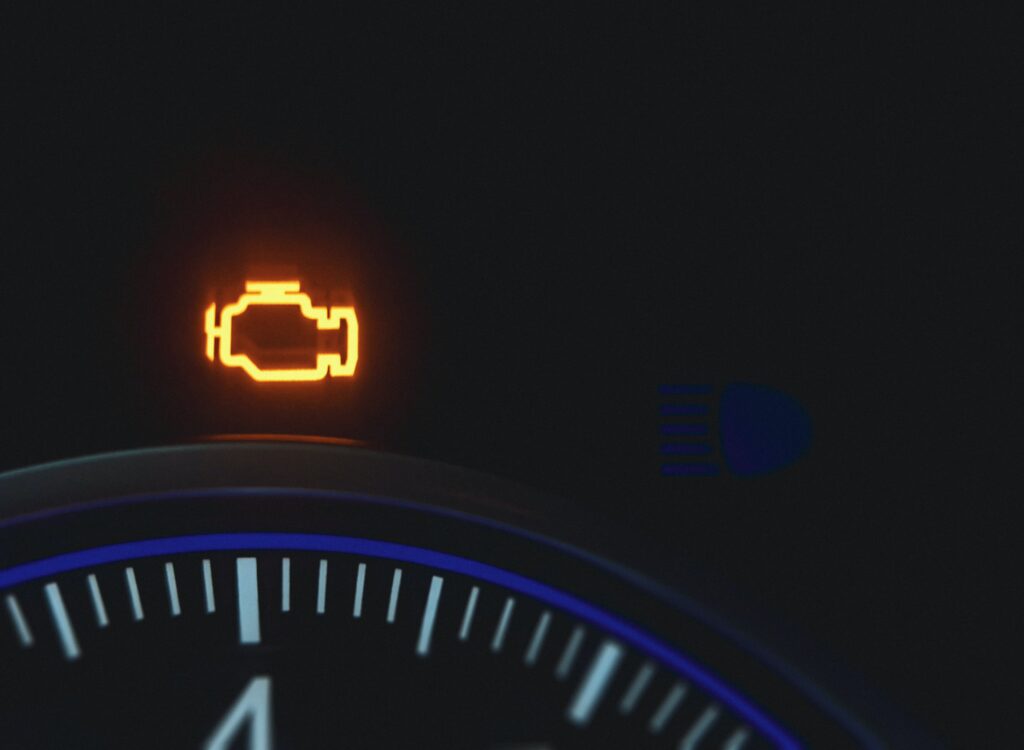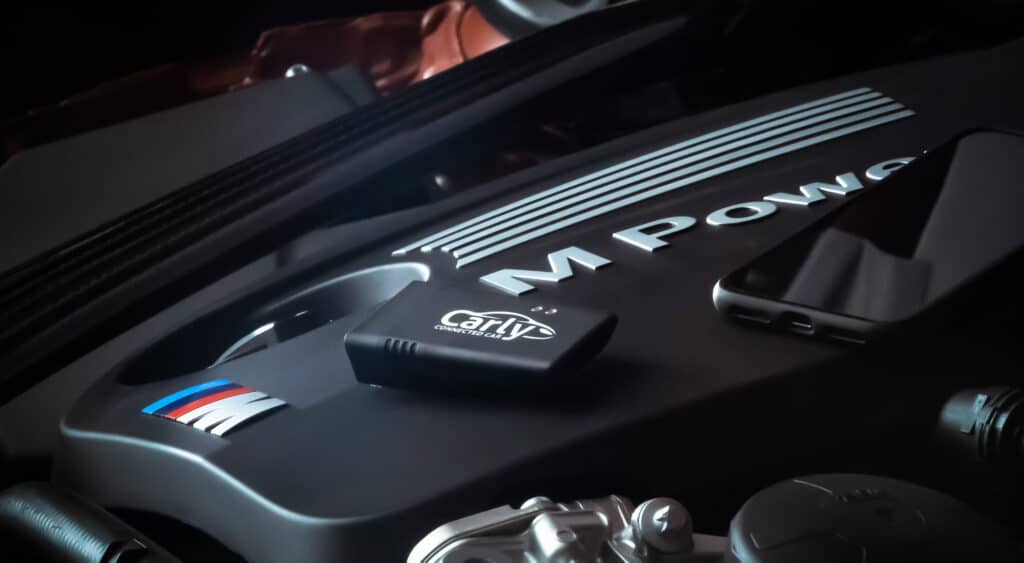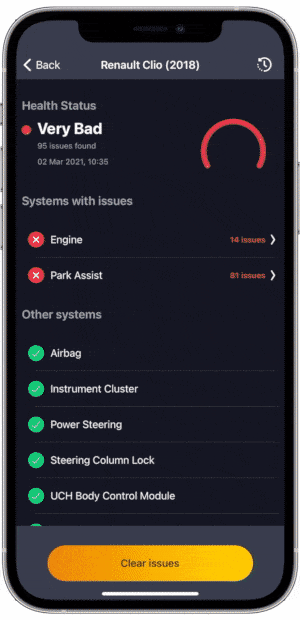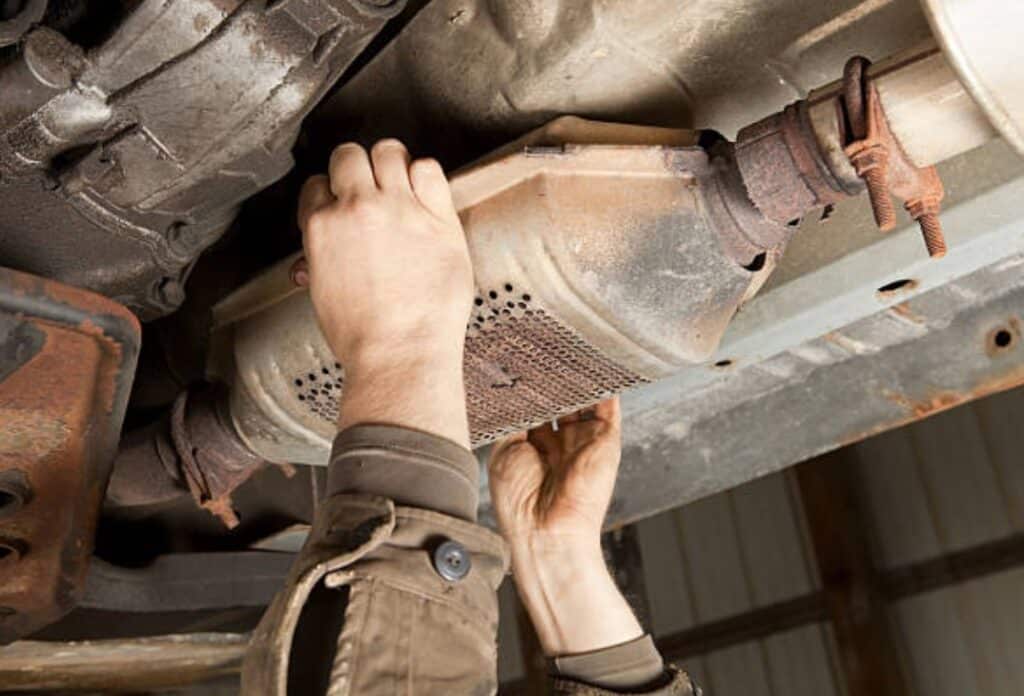Imagine having the power to unlock the secrets of your vehicle, effortlessly diagnosing issues and maximizing its performance. The key lies in understanding code OBD2, the hidden language that communicates what’s happening under the hood. By mastering these codes, you can stay ahead of potential problems and maintain your vehicle in top shape, all while saving time and money. Ready to dive into the world of code OBD2 and unlock the full potential of your car? Let’s get started!
In this comprehensive guide, we’ll demystify code OBD2 and explore essential diagnostic tools, including scanners and apps. We’ll also decode common OBD2 codes, delve into advanced troubleshooting techniques, and embrace preventive measures to keep your vehicle running smoothly and efficiently. With this knowledge, you’ll be well-equipped to tackle any vehicle issue head-on, ensuring optimal performance and a more enjoyable driving experience.
Key Takeaways
- OBD2 codes allow for better understanding of vehicle performance and early detection of issues.
- Comparing generic and manufacturer-specific OBD2 codes, as well as using diagnostic tools such as scanners or apps can help diagnose and resolve issues quickly.
- Regularly monitoring OBD2 codes with preventive maintenance strategies is essential to maintain optimal vehicle performance.
Demystifying OBD2 Codes: What They Are and How They Work

OBD codes, including OBD2 codes, are the key to unlocking precise issues with contemporary engines and vehicle systems. These codes monitor system functionality and detect potential issues with your car’s:
- emissions-related powertrain
- network systems
- chassis
- body electronics
OBD2 codes alert you to problems, from minor glitches to critical failures, by triggering the check engine light.
At the heart of the OBD2 system lies the Electronic Control Unit (ECU), which continuously monitors sensors and components throughout your vehicle, such as the engine, transmission, and drivetrain components. Gaining insight into your vehicle’s performance, early detection of issues, and maintaining optimal vehicle health becomes easier when you understand the structure of OBD2 codes.
The Structure of OBD2 Codes
The structure of OBD2 codes provides specific information related to a fault or issue in your vehicle. Each digit in an OBD2 code signifies a particular aspect of the problem: the first digit indicates the system, while the subsequent digits offer more specific details about the issue. For example, Diagnostic Trouble Codes (DTCs), also known as dtc codes, are codes stored in your engine computer’s memory that indicate possible issues with your vehicle’s emissions-related electrical components.
Understanding the structure of OBD2 codes is essential for accurately diagnosing vehicle issues. Interpreting these codes and consulting the OBD2 code database allows you to identify the malfunctioning component and proceed with necessary diagnostic steps to resolve the issue.
Armed with this knowledge, you’ll be well-equipped to tackle any vehicle problem head-on and keep your car running smoothly and efficiently.
Generic vs. Manufacturer-Specific Codes
Not all OBD2 codes are created equal. There are two main types: generic codes and manufacturer-specific codes. Generic codes are uniform across all vehicles, making them easy to interpret with a generic scan tool or code reader. Examples of generic OBD2 codes include P0000 to P0099 for powertrain issues and P0100 to P0199 for air/fuel mixture problems.
Manufacturer-specific codes, on the other hand, are tailored to a particular make and model. These codes provide additional insight into vehicle-specific issues and may require a specialized scanner or diagnostic tool for accurate interpretation. Examples of manufacturer-specific OBD2 codes include:
- P0500
- P0501
- P0502
- P0503
- P1xxx codes
A better diagnosis and resolution of issues specific to your vehicle can be achieved by understanding the distinction between generic and manufacturer-specific codes.
Essential Tools: OBD2 Scanners and Diagnostic Apps

Accessing and interpreting OBD2 codes requires the right tools. OBD2 scanners, essential for reading these codes, display them on the scanner’s screen or through a compatible app. Diagnostic apps, on the other hand, are mobile applications that facilitate the reading and interpretation of diagnostic data from your vehicle’s OBD2 system. With the right scanner and app, you’ll be well-equipped to diagnose and resolve any vehicle issue.
In the following sections, we’ll discuss how to choose the right OBD2 scanner for your vehicle and harness the power of diagnostic apps for accurate code interpretation and issue resolution.
Choosing the Right OBD2 Scanner
There are various types of OBD2 scanners available on the market, from simple engine code readers to advanced multi-system scanners. Selecting an OBD2 scanner requires careful consideration of compatibility with your vehicle’s make, model, and model year. Some popular options for DIY car enthusiasts include the Carly OBD2 scanner, Innova 3020 CanOBD2 Diagnostic Tool, and OBDlink MX+.
Additionally, when selecting an OBD2 scanner, consider factors such as:
- Functionality
- Diagnostic capabilities
- User interface
- Accuracy of readings
- Price
- Value for money
- Brand reputation
- Customer reviews
Choosing the right OBD2 scanner for your needs will equip you better to diagnose and resolve vehicle issues, ensuring optimal performance and a more enjoyable driving experience.
Harnessing the Power of Diagnostic Apps
Diagnostic apps offer a powerful and convenient way to access and analyze OBD2 codes. These apps not only decode the codes but also offer verified solutions, streamlining troubleshooting and fault diagnosis on your vehicle. Popular diagnostic apps include:
- Car Scanner ELM OBD2
- OBDeleven
- EOBD Facile
- OBD Arny
- OBD Auto Doctor
- BlueDriver
To use a diagnostic app, simply follow these steps:
- Connect the app to your OBD2 scanner via Bluetooth or Wi-Fi.
- Start accessing your vehicle’s diagnostic data.
- With the right app, you’ll have all the information you need at your fingertips, empowering you to diagnose and resolve vehicle issues with confidence and ease.
Decoding Common OBD2 Codes: Symptoms, Causes, and Solutions

Accurate diagnosis of vehicle issues and implementing the appropriate solutions necessitates understanding common OBD2 codes. These codes can provide valuable insight into the symptoms, causes, and potential solutions for various vehicle problems, from oxygen sensor malfunctions to exhaust gas recirculation issues.
In the following sections, we’ll delve into powertrain-related codes and emission system codes, providing examples of common codes and discussing their implications for your vehicle’s performance and efficiency.
Powertrain-Related Codes
Powertrain-related OBD2 codes are of great significance in vehicle diagnostics, as they indicate any potential issues with the engine, transmission, and associated drivetrain accessories. Understanding these codes enables you to pinpoint the exact problem and equip technicians with the necessary information for effective diagnosis and resolution of the underlying issues.
Common powertrain codes, also known as trouble code, include P0171 (indicating an imbalance between the amount of air and fuel entering the engine) and P0300 (indicating random/multiple cylinder misfires). By interpreting these codes and their symptoms, causes, and solutions, you can stay ahead of potential problems and ensure optimal vehicle performance.
Emission System Codes
Emission system codes can have a considerable effect on your vehicle’s efficiency and environmental impact. These codes help detect problems that could result in increased fuel consumption, increased emissions, and reduced performance, all of which can negatively impact catalyst system efficiency. One such issue could be related to the fuel system, making it essential to know how much fuel is being used.
Common emission system codes include P0401 (indicating a problem with the exhaust gas recirculation system) and P0442 (indicating a small leak in the evaporative emission control system). By understanding these codes and their symptoms, causes, and solutions, you can take the necessary steps to maintain your vehicle’s efficiency and minimize its environmental footprint.
Advanced Troubleshooting Techniques for Complex OBD2 Codes

Some OBD2 codes require more advanced troubleshooting techniques to accurately diagnose and resolve the underlying issues. In these cases, a deeper understanding of your vehicle’s systems and the potential causes of complex OBD2 codes is required.
In the following sections, we’ll explore advanced troubleshooting techniques for network communication issues and sensor malfunctions, providing valuable insight into the diagnosis and resolution of complex OBD2 codes.
Network Communication Issues
Diagnosing and resolving network communication issues in your vehicle’s systems requires a thorough understanding of the control module communication bus and the various components involved. Common network communication issues include:
- Ignition-key position
- Connector-voltage issues
- Incorrect communication
- Bad grounds
- Poor battery voltage
- Poor connections
- Faulty modules or network communication nodes
- Wiring issues
- Corroded or loose connectors
To diagnose network communication issues using OBD2 codes, follow these steps:
- Check for communication-related U-codes in other ECUs.
- Perform wiring troubleshooting to ensure there are no connectivity issues.
- Use an OBD2 scan tool to read the diagnostic trouble codes (DTCs) produced by the vehicle’s onboard diagnostics system.
- Analyze the DTCs to identify the specific network communication problems detected by the system.
- Use the information from the DTCs to accurately diagnose and resolve the issue.
By following these steps, you can effectively diagnose and resolve network communication issues using OBD2 codes.
Sensor Malfunctions
Sensor malfunctions are a common cause of complex OBD2 codes and can be challenging to diagnose and resolve. Common sensor malfunctions include:
- Faulty sensors (such as camshaft, mass airflow, throttle position, and oxygen sensors)
- Vacuum leaks
- Worn or contaminated components (such as spark plugs, wires, and coil packs)
To diagnose sensor malfunctions using OBD2 codes, follow these steps:
- Retrieve the diagnostic trouble codes (DTCs) from your vehicle’s OBD2 system.
- Interpret the codes to identify the specific issue affecting the sensors or other components.
- Utilize an OBD2 scanner and diagnostic app for accurate diagnosis of sensor malfunctions.
- Take the necessary steps to resolve the issue, ensuring optimal vehicle performance and a more enjoyable driving experience.
Preventive Measures: Keeping Your Vehicle in Top Shape

Taking a proactive approach to vehicle maintenance is essential for keeping your car in top shape and avoiding costly repairs. Regular monitoring of OBD2 codes and proactive approach towards maintenance and repairs can effectively prevent potential issues and maintain optimal vehicle performance. One such example is ensuring your thermostat regulating temperature functions properly, as it plays a crucial role in maintaining your engine’s temperature.
In the following sections, we’ll discuss the importance of regularly monitoring OBD2 codes and adopting preventive maintenance strategies to ensure your vehicle remains in peak condition.
Regularly Monitoring OBD2 Codes
Regularly monitoring OBD2 codes is crucial for ensuring the proper functioning of your vehicle. Reading these codes helps in detecting and resolving any potential issues before they escalate into more serious problems. Some popular tools for monitoring OBD2 codes include:
- Carly
- BlueDriver Bluetooth Pro
- Innova
- OBDII Scan Tool MS309
- T31 Mini Auto Diagnostic Trouble Codes Tool
- FOXWELL NT301
- Foxwell OBD2 NT624 Elite Scan Tool
By keeping a close eye on your vehicle’s OBD2 codes, you can address potential problems before they become more serious, saving time and money on repairs and ensuring optimal vehicle performance.
Staying Proactive with Maintenance and Repairs
Staying proactive with maintenance and repairs is essential for extending the life of your vehicle and preventing OBD2 codes. Here are some crucial aspects of proactive maintenance:
- Regular vehicle inspections
- Oil changes
- Fluid flushes
- Component cleaning
- Scheduled parts replacement
In addition to regular maintenance, adopting a proactive approach to repairs can help reduce the likelihood of OBD2 codes occurring. Addressing issues early and implementing the necessary repairs helps avoid costly breakdowns and ensures your vehicle remains in optimal condition.
The Carly App
Unlock the full potential of your vehicle with the Carly App, the ultimate diagnostic solution for your car. The Carly App offers the following features:
- Coding
- Vehicle diagnostics
- Maintenance services
- Used car checks
- Digital garage for storing and analyzing data
With these features, the Carly App provides a comprehensive solution for monitoring and managing your vehicle’s health.
Simply plug the Carly scanner into your vehicle’s OBD2 port, connect via Bluetooth, and gain access to a wealth of diagnostic data and repair advice at your fingertips. With the Carly App, you’ll have all the tools and information you need to keep your vehicle running smoothly and efficiently.
Summary
In this comprehensive guide, we’ve explored the world of OBD2 codes and the tools and techniques necessary to diagnose and resolve vehicle issues. From understanding the structure of OBD2 codes to harnessing the power of diagnostic apps like the Carly App, you now have the knowledge and resources to tackle any vehicle problem head-on and maintain your car in top shape.
By embracing preventive measures, regularly monitoring OBD2 codes, and staying proactive with maintenance and repairs, you can ensure optimal vehicle performance and enjoy a more enjoyable driving experience. Now that you’ve unlocked the secrets of OBD2 codes, it’s time to take control of your vehicle’s health and hit the road with confidence!
Frequently Asked Questions
How do I find my OBD2 code?
To find your OBD2 code, locate your car’s diagnostic port, plug in an OBD2 code reader or scanner, turn your car’s ignition key to the “ON” position, and then follow the tool’s on-screen prompts to retrieve any DTCs.
What can OBD2 detect?
OBD2 can detect various faults in a vehicle’s engine, exhaust emissions and fuel efficiency by retrieving data from its sensors and then analyzing it with the car’s ECU. It can also access trouble codes related to the transmission, ignition, brakes and airbags. Finally, OBD2 can monitor several parameters in real-time.
What are the codes on a car?
Diagnostic Trouble Codes (DTCs) are five-digit codes used to identify a particular problem in the car. OBDII systems use these codes to communicate issues to technicians, and are made up of four different subsets that indicate where in the vehicle the malfunction lies. When triggered, these codes are displayed on the scanning tool when it’s connected to the OBD system.

